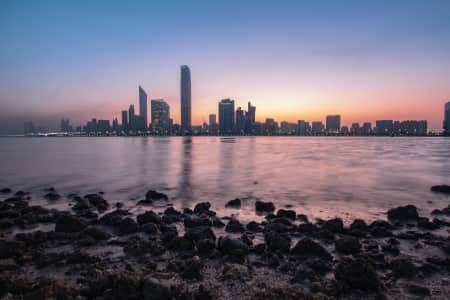How It's Built: Al Bahr Towers
These two innovative and beautifully designed towers, located in the city of Abu Dhabi, are among the most impressive examples of adaptive architecture and integrated design in recent architectural history. The designs grew and emerged from an international competition held in 2007 by the Abu Dhabi Investment Council. This is the story of the energy-efficient and iconic building that took the traditional vernacular Islamic architecture and turned it into something of modern language.
View this post on Instagram
Who Designed Al Bahr Towers?
The 145m high buildings, located in the city of Abu Dhabi, were designed by the architecture firm AHR and constructed by Al-Futtaim Carillion, a Dubai-based provider of integrated solutions for infrastructure, building, and services. Construction on the buildings began in 2009 and was completed in 2012.
What is the main design concept of Al Bahr Towers facade?
The Al Bahr Towers feature the world’s largest computerized dynamic facade. A dynamic facade, also known as a responsive facade, is a building exterior that maximizes a building's performance by responding to change in its surrounding environment. The adaptability of this building exterior allows the building to control its interior environment, in doing so, minimizing the energy consumption of building services systems.
The design concept of this exterior is inspired by the ‘mashrabiya’, a traditional piece in Arabic architecture of wooden lattice screens. These screens have been used to fill windows since the 14th century, providing shade, airflow, and privacy in buildings. Because of the shape of the building, the design team knew it was not possible to use the traditional horizontal or vertical louvers. Therefore, they needed a more sophisticated design. This led the design team to create a triangulated shading system, resembling the movements of an umbrella.
The eco-friendly and innovative design of these two towers has gained remarks from many architects and publications. This included being featured on the Chicago-based Council on Tall Buildings and Urban Habitats' “Innovative 20” list of buildings that “challenge the typology of tall buildings in the 21st century”. The towers were also awarded the 2021 Tall Building Innovation Award for the project's sustainable engineering, and cultural and urban approach.
“The façade on Al Bahar, computer-controlled to respond to optimal solar and light conditions, has never been achieved on this scale before. In addition, the expression of this outer skin seems to firmly root the building in its cultural context,” explained Awards Juror Chris Wilkinson of Wilkinson Eyre Architects.
What are the Al Bahr Towers made of?
The exterior facade is made of over 2,000 umbrella-like glass elements, with about 1050 elements per tower, that automatically open and close depending on the intensity of the sunlight. Each of these shading devices encompasses a series of stretched polytetrafluoroethylene panels.
Each shade weighs approximately 1.5 tonnes and when closed can still be seen through to the outdoors by occupants. The folding and unfolding of the shades respond to the movement of the sun and combat the harsh environment of Abu Dhabi, reducing solar gain by up to 50%, while simultaneously improving the building comfort and reducing the energy usage needed to cool the building.
To ensure optimal performance of the exterior shades, a series of thermal modeling and 3D solar analysis of the building was performed on specific areas of the tower at various points of the year to determine the required extent of the shading system and the cycle at which the shades would open and close. As a result of the shade’s successful ability to filter light, architects were able to choose a more naturally tinted glass, reducing the need for artificial light as well as improving the views from the building.
What are Al Bahr Towers used for?
The first Al Bahr Towers serves as the Abu Dhabi Investment Council’s headquarters and an investment arm of the Government of Abu Dhabi, while the second tower serves as Al Hilal Bank’s head office, a progressive and innovative Islamic Bank.

